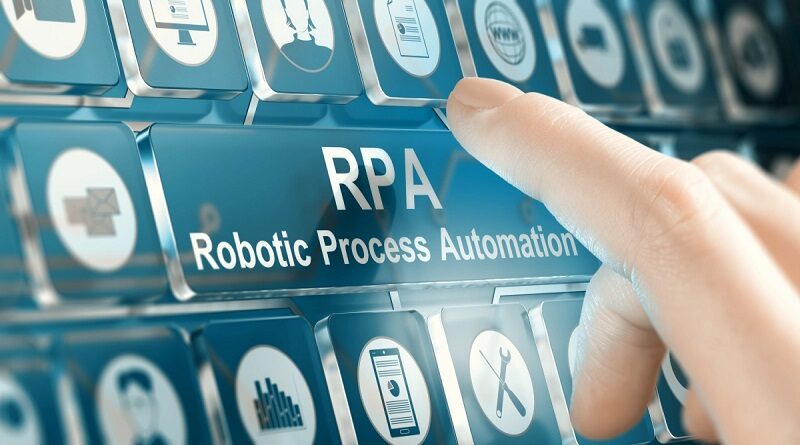Robocorp simplifies open-source RPA
The roots of robotic process automation (RPA) emerged from the test automation domain. Test engineers used RPA’s predecessors to emulate how humans’ type and click their way through applications in the early 2000s. In the 2010s, vendors started hardening these early tools to automate repeating tasks like copying data between apps, and RPA was born.
Now Robocorp, which emerged from an open-source test automation project, is hoping to capture a position in second-generation RPA tools that promise to harden and scale the technology. It recently launched a beta version of Automation Studio, which promises to bridge the communication gap between professional developers and business users. More importantly, this builds on the company’s second-generation RPA infrastructure and attractive pricing model.
First generation of RPA
It is helpful to take a step back to understand why this is important. RPA sits in a crowded field of automation technologies, including low-code and no-code development tools, intelligent process automation, and the automation capabilities built into enterprise software platforms.
Although the first generation of RPA tools is not as fast as low-code automation, they are much easier for the average user to understand since it essentially mimics how people work with applications. Gartner lumps this ensemble of technologies together into hyperautomation, which is expected to reach $596 billion this year.
Today, the RPA industry is led by companies including Automation Anywhere Blue Prism and UiPath at least in revenue share. Microsoft recently started giving away access to the client side of its Power Automate Platform. A recent report by Blueprint Software titled, State of Automation in 2022, found that Microsoft Power Automate was used by 76% of respondents, followed by Blue Prism (34%), Automation Anywhere (33%), and UiPath (23%). Blueprint makes tools for analyzing business processes and refactoring RPA code to work across RPA platforms. About 40% of respondents used multiple RPA platforms.
Room for competition
“Since [RPA is] rather young compared to other enterprise software segments, it seems organizations are still uncovering which RPA platform is best for them according to their needs.”
This is good news for the assemblage of RPA startups vying for a piece of the market, like Robocorp. Its new Automation Studio provides a shared view of RPA automations, called bots, for both developers and business users. It also builds on the company’s existing work coding RPA bots in Python that can run on open-source servers.
Robocorp was founded by Antti Karjalainen, Sampo Ahokas, and a small team of top developers who were active in the open-source test automation community called Robot Framework. The team created the infrastructure to transform the test automation framework into a robust RPA platform, much like the RPA pioneers.
The company’s CEO, Karjalainen, the Robot Framework test automation capabilities could be applied to the RPA space to solve numerous problems that are not currently addressed by traditional RPA vendors. So, they built open-source development tools and a flexible cloud-native orchestration platform to help creators quickly and securely build, implement, and scale sustainable bots across their organizations.
This lets users automate virtually any process and technology with exceptional speed and elasticity with no licensing fees and a consumption-based pricing model. Aligning usage with pricing could be important for enterprises looking for opportunities to reduce the costs of their automation spending. The Blueprint survey found that enterprises were spending an average of $480,000, with 13% spending upward of $1 million on RPA annually.
One of the big advantages of the Automation Studio is how it supports toggling between the work modes of both low-code business domain experts and pro-code developers in one platform.” Jason English, a principal analyst at the advisory firm Intellyx.
English noted that he was also impressed with Robocorp’s foundation of an open-source automation framework that captures automations into transparently readable Python-like code assets. This makes it easier for companies to try it out with less risk of proprietary lock-in versus established RPA competitors.
“Developed automation assets are portable and at home within enterprise work management tools as well as automated software pipelines and GitOps.”
The field moves forward
To be fair, all the RPA vendors have added considerable enhancements over the years to improve RPA quality, scalability, and development. For example, Automation Anywhere refactored its original platform to run in the cloud, UiPath enhanced RPA governance, and Blue Prism improved scalability.
One of the complaints about RPA is that it operates at the UI layer, so the original bots had to click and type their way through apps. Although this is much faster than a human, it is much slower than custom-coded API integration.
One advantage of the Robocorp platform is that it allows developers to create apps that automate at the level of the UI, the location in a web page, the API, or by specifying data access. This promises to give developers greater flexibility in how they craft automations that are more reliable and faster than UI-only automations.
Microsoft has started doing something similar with its Power Automate platform, allowing developers to create an automation that works through the UI or APIs for selected apps. That said, Robocorp’s open-source approach is already galvanizing a small army of consultants and systems integrators to build out a library of reusable automations across the industry.
This could give enterprises a bit more flexibility in their automation strategy. For example, the new Automation Studio interface could help improve communications between business users and developers.
“It opens the door for those who prefer a visual approach to automation, while keeping it open for those who prefer a more programmatic approach through multiple methods of building, it’s also a good learning tool for citizen developers that want to become better versed in code.”




